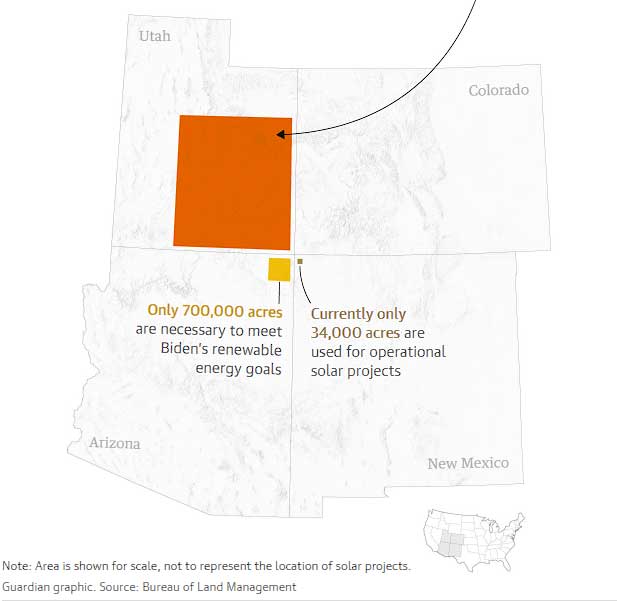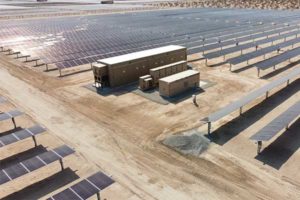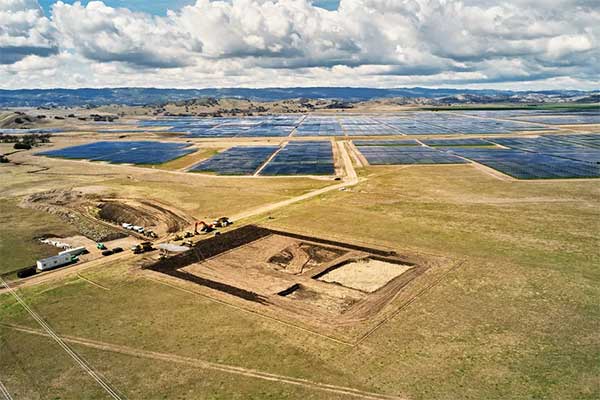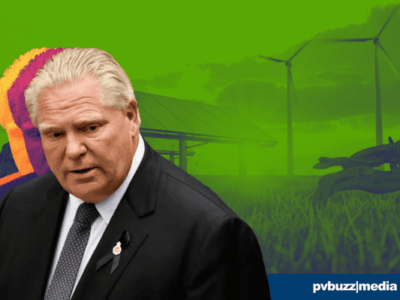As the United States embarks on the ambitious journey of transitioning away from fossil fuels, the need for substantial land for solar energy projects has become a pivotal issue.
The Bureau of Land Management (BLM), the largest federal agency overseeing public lands, recently proposed a groundbreaking plan to allocate 22 million acres in the western U.S. for solar energy development. This area is approximately the size of Maine, illustrating the scale of this initiative.
Advancing Solar Energy Adoption and Addressing Challenges
The BLM’s proposal is in line with a new administration plan focused on accelerating solar energy adoption in the western U.S. By earmarking 22 million acres, the U.S. aims for “maximum flexibility” in meeting its climate goals. This includes providing ample space for solar panels, associated cables, and transformers.
Of this land, about 700,000 acres will be designated for solar panels to meet President Joe Biden’s target of achieving a 100% clean electricity grid by 2035, a significant increase from the current 34,000 acres used for solar projects.

The Bureau of Land Management proposed using 22m acres of public land for solar projects – roughly the size of Maine, or an area larger than Scotland (Credit: TheGuardian)
Solar energy, contributing just over 3% to the U.S.’s electricity generation, is experiencing a surge, bolstered by President Biden’s clean energy subsidies. The BLM is advancing major projects, such as the largest in Nevada, which will cover 5,500 acres and power over 200,000 homes. The sector is expected to grow by 75% next year, adding 79,000 megawatts of new capacity.
However, this growth has raised concerns among residents and environmentalists, particularly regarding the use of farmland or local community land for solar farms. The BLM emphasizes the compatibility of solar projects with agricultural uses and prefers development near existing transmission lines, considering habitat and cultural exclusions.
Environmental groups argue for a balance between protecting food-producing land, habitats for threatened species, and addressing the climate crisis through renewable energy. Justin Meuse from the Wilderness Society advocates that renewable energy on public lands can be a “win-win-win” scenario, highlighting its necessity and feasibility.
Streamlining Solar Development and Balancing Interests
In a significant move, the Biden administration has outlined a plan to streamline solar project development on these 22 million acres of federal land. The BLM’s proposal includes programs to simplify the permitting process for utility-scale solar projects, identifying suitable lands for large developments across 11 states, and balancing conservation with industry needs.
This is part of broader reforms to shift public land use away from fossil fuel production towards clean energy development.
The solar industry and environmental advocacy groups have welcomed this proposal. However, some academics and environmentalists express concerns about the potential development of undisturbed lands, advocating for prioritizing agricultural land or rooftops.
The final rule for the updated Western Solar Plan is expected later this year, with the public comment period open until April 18. Advocates believe that conservation and solar development can coexist with careful planning.

Desert Harvest 1 & 2 Solar Projects in Riverside County, California. (Business Wire)
The BLM’s environmental assessment, aided by the National Renewable Energy Laboratory, indicates that around 700,000 acres of federal land will be required to meet the nation’s renewable energy goals. By 2035, NREL estimates that four million acres of land will be needed to sustain the current rate of solar generation expansion.
The proposed plan prioritizes 22 million acres within 10 miles of transmission lines, recognizing the importance of these lines for efficient renewable energy distribution. The plan could serve as a model for coordinated zoning and land-use planning at state and national levels.
While balancing industry needs, local communities, and environmental concerns, the BLM’s efforts reflect a comprehensive approach to public land management amid a changing climate and energy landscape. Biden’s promise to streamline the development of solar projects will significantly impact the industry.
Global Perspective
Now is the time for groups to engage in meaningful dialogue to find the best balance between protecting food-producing land, habitats for threatened species, and addressing the climate crisis through renewable energy. In the race to meet global climate goals, political leaders must act decisively.
Biden’s administration has facilitated industry development by implementing supportive policies and reducing bureaucratic obstacles. With similarly ambitious net-zero goals, Canada is also encouraged to take proactive measures to enhance the appeal of investing in its renewable energy sector.













Comments